Travels with Dick and Karen
CHINA Spring 2012
Part 3
Shilin
(Stone Forest)
|
 |
We visited the Stone Forest as a day-trip from Kunming. We had originally wanted to stay overnight but couldn't contact any of the hotels mentioned in the guidebooks. Once we arrived we discovered that all the old hotels had been torn down to make way for a massive new complex which was still under construction.
The usual way to get there was to book through a hotel or tourist agency. We wanted to take the (hopefully) more economic path of just getting there by the extensive public bus system. The first question was "where do we catch the bus?". Chinese cities have multiple bus stations... short-haul and long-haul, with the long-hauls arrayed around the city in the general direction of travel (north, east, south, west). The Stone Forest was located near the city of Shilin to the Southeast. After puzzling through guidebooks, we fell into the happy circumstance of finding a local student eating at the lost Garden's rooftop dining room, seeking out English-speakers (us!) to practice on. Her friend called the bus stations and determined the most efficient and cheapest route (city bus 50 to the Eastern bus station, then take the signed bus). Bus 50 crossed the city from our west-of-center guesthouse to far into the suburbs to the east. We saw the massive Eastern Bus Terminal fly by on a rise above our highway. About a mile later we exited the highway and looped back to the sea of busses that was the city bus terminus. We followed the dozens of other passengers constantly flowing back and forth, dragging their rolling luggage across the street and up a bit. There was the Eastern Bus Terminal. There we got in line for the ticket window, bought our tickets (once more ol' "senior citizen" Dick managed a half-fare ticket), were vaguely directed by the ticket sellers towards the busses, were pushed by helpful people toward the correct doorway into the yard, where we were corralled by the driver of our bus into the appropriate line. |
 |
| Then we were off on a 50 mile journey across the forested and farmed area southeast of Kunming. Much of the trip was through semi-dry conditions, with soil and plants varying with altitude. The red color seen here is the soil. Some of the area appeared fairly wild and untouched, most of the valleys were filled with irrigated(?) crops. |
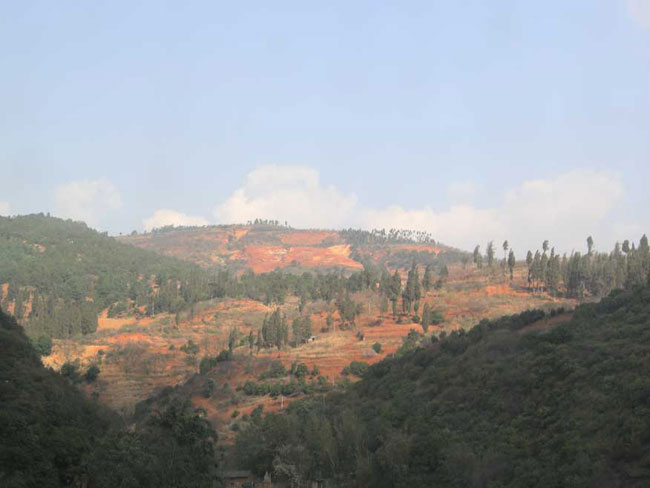 |
| The roads were in excellent condition with gentle grading (when possible) for easier flow. That required deep cuts in the hillsides, with extensive reinforcement of the high banks. Complex archworks allowed both support and interspersed plantings to stabilize the soil. |
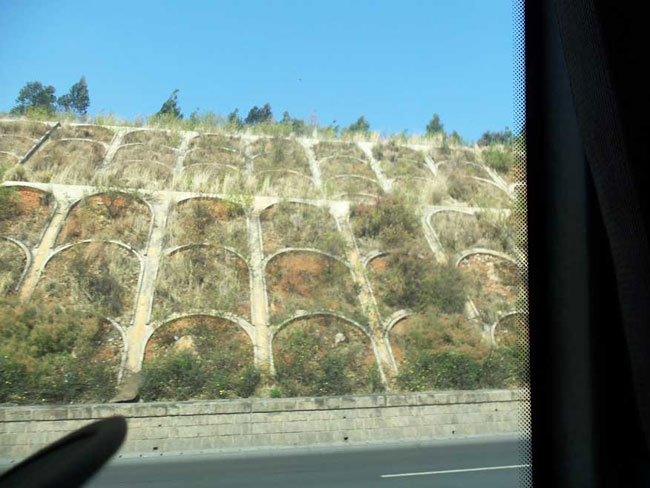 |
| There were numerous tunnels. Most had impressive decoration of their portals, such as this facade mimicing the up-coming Stone Forest formations. |
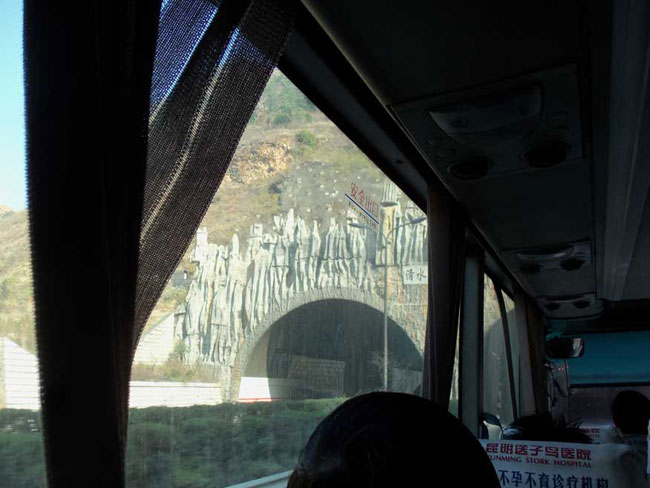 |
| As we approached Shilin, the local landscape began to reveal the karst tower structures that give the Stone Forest its name and fame. |
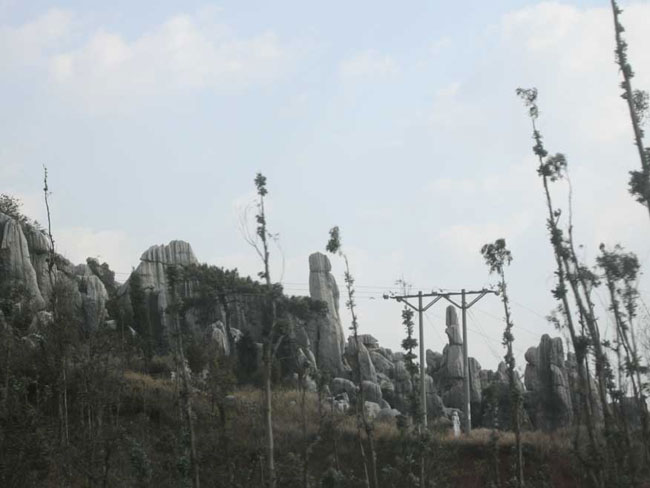 |
| An exit from the highway, a 6 kilometer curving entry road, and we arrived at the very ornately arranged entry to the Stone Forest site. |
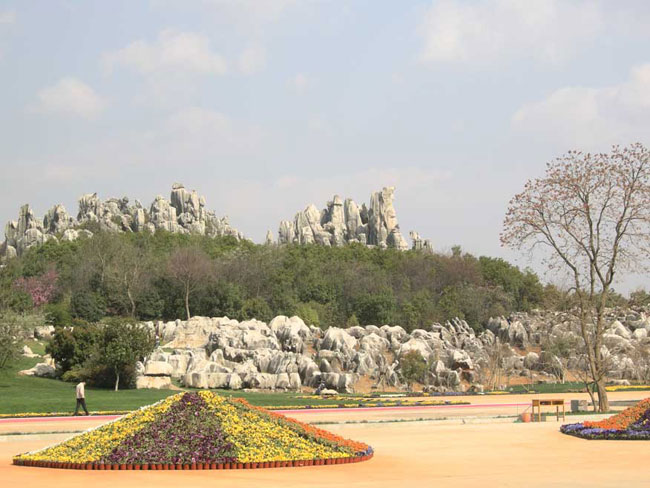 |
The obligatory map-carved-in-wood ... without a "you are here" since you're not. This sign is located a mile or two off to the left of the map. From the florid entry buildings and grand hotel it's a 2 mile walk/drive to that lake that forms the entry to the actual preserved area. Electric carts take you down that first 2 mile access road. They drop you off at the left end of the lake. You then walk to the right end, where you meet another fleet of electric carts to drive you around the periphery of the site.
|
 |
| The Stone Forest is one of the most-visited tourist attractions in southern China. The crowd-control and queuing systems easily rival and surpass Disneyland in their capacities. This set of rails guides you to the first electric cart boarding point. Since we were very "off season" and "on a weekday", the crowds we encountered were miniscule. |
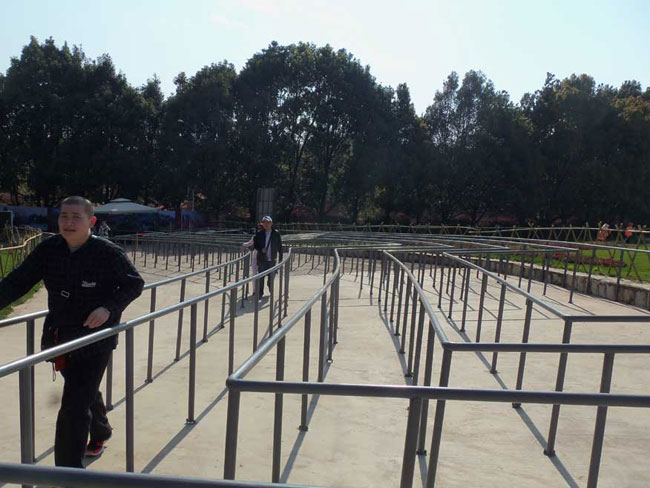 |
| Tour groups were led by native-costumed guides bearing the ubiquitous colored pennants. Since China has a number of dialects, the site's offering of multi-lingual guides was mainly for domestic consumption. |
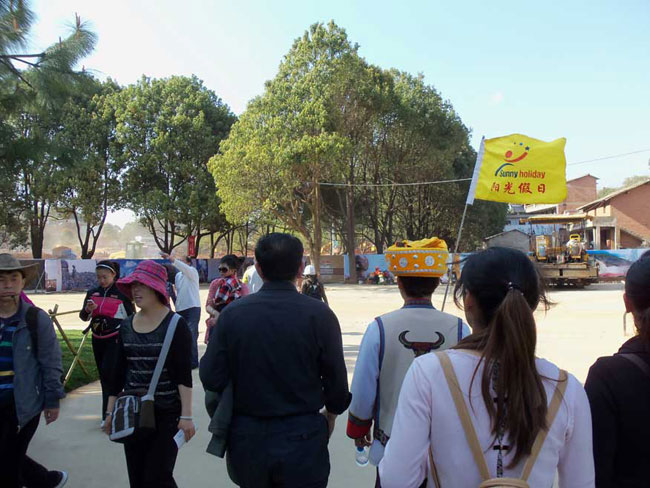 |
| Here we are on our cart, saving ourselves the two mile hike in the 80 degree heat. We'd be spending the next 6 hours hiking through the karst, so 3 minutes of luxury were worth it. |
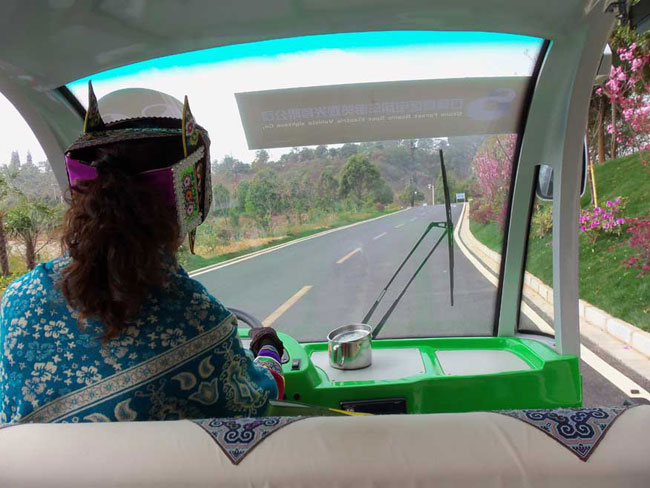 |
| Once we got to the other end of the lake, we didn't take a cart. Instead we began walking through the site. The initial path led us to this marvelous meadow (available for weddings) with tantalizing views of what was to come. |
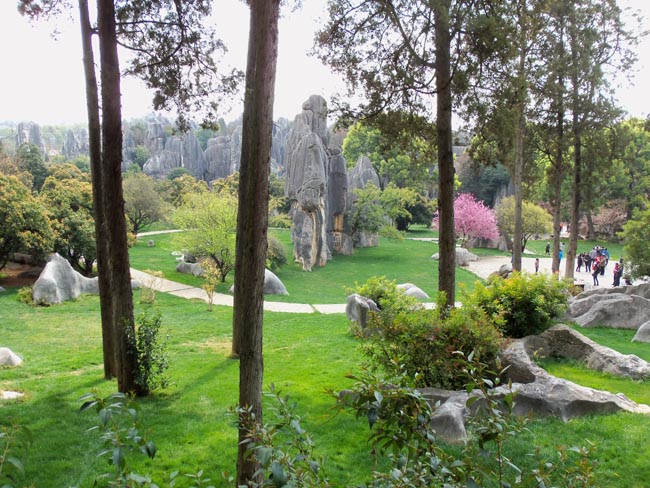 |
| When we began asking at the Lost Garden about reaching the Stone Forest, the staff told us that other guests were seeking the same information. Hence we met these two "house mates" from Quebec who were on an extended ground trip through Vietnam and China (with an eventual book in mind). We teamed up in arranging and coordinating the jaunt. They shared their experience with the Chinese long-haul bus system and we'd been lucky in finding the students who gave us the how to reach the correct (eastern) bus station information. |
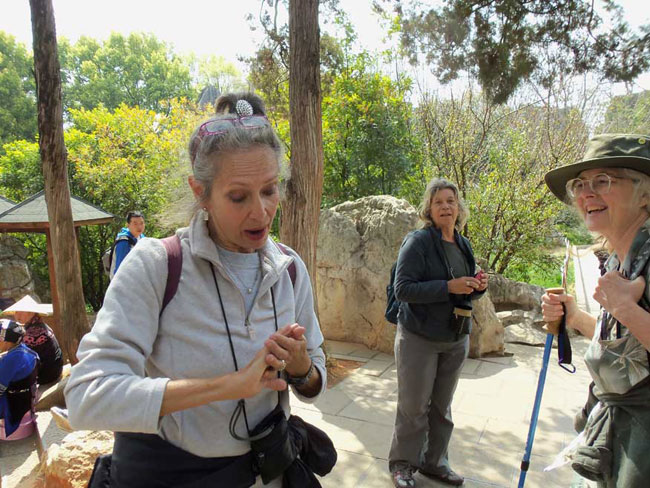 |
| The first two or three areas adjacent to the lake were heavily developed: completely paved with plantings and plaques carved into the karst towers. |
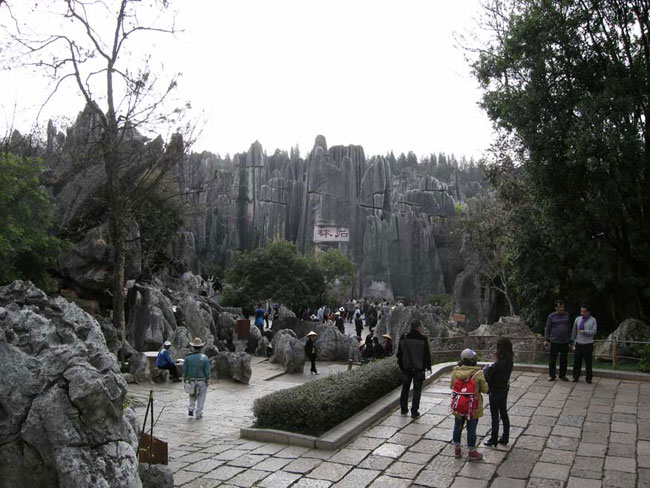 |
| ...but as we wandered further, the development began to drop off and let the natural scenery take over. |
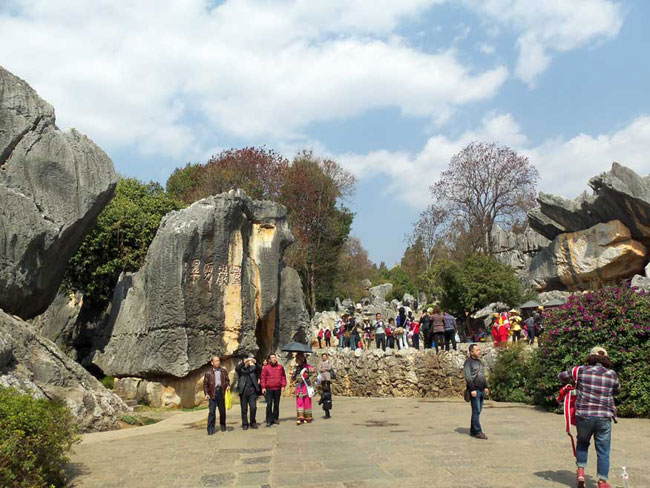 |
| ..eventually the development diminished to simply dozens of paved trails wandering through the rocks and peaks. Stairs made some of it easier, but there were still less-developed scrambles awaiting the visitor |
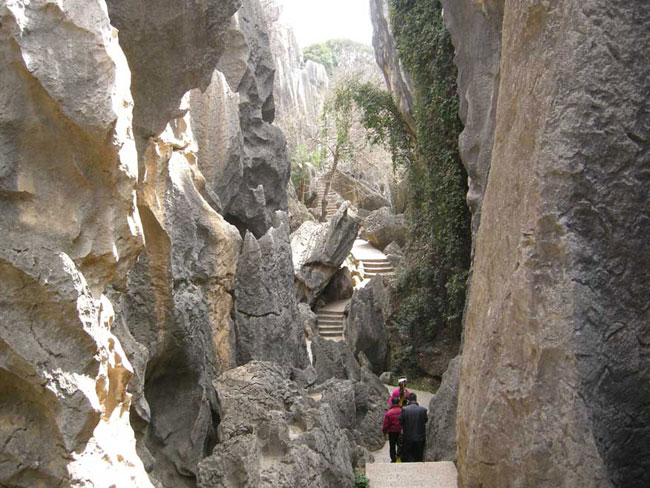 |
| A mere turn of the head would find apparently untouched vistas of fantastic weather- and water-shaped rocks |
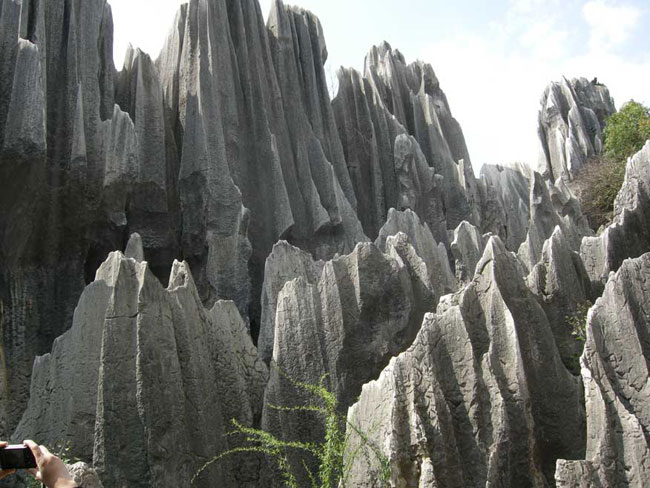 |
| Throughout the park are numerous "named" formations. "Flying Fairy", "Rinocerous Overlooking the Moon" and here, the "Elephant" (above the hat). |
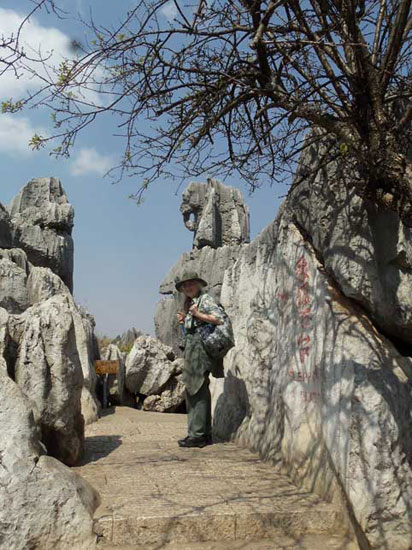 |
| This strange person would frequently be asked to be photographed by the Chinese tourists. Saying "Yes" usually ended up with a group gathering around with one person snapping a photo. Then a shuffle would ensue as one person would leave the gathering to take another photo after the first rejoined the group. Repeat for however many were in the group. |
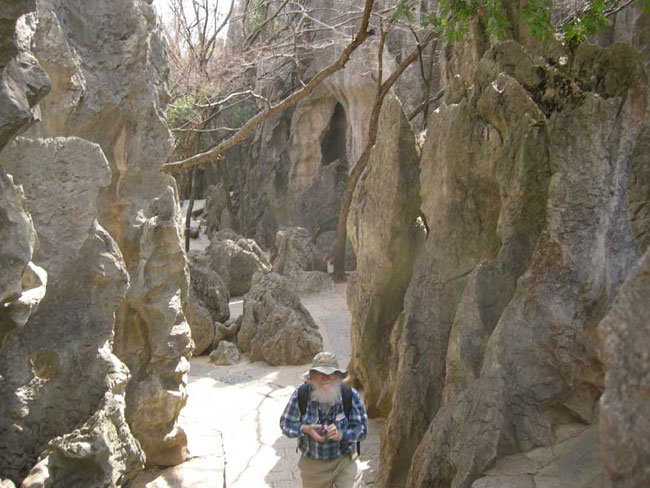 |
| Stone tables and seating were sprinkled throughout the site, usually in shady niches. |
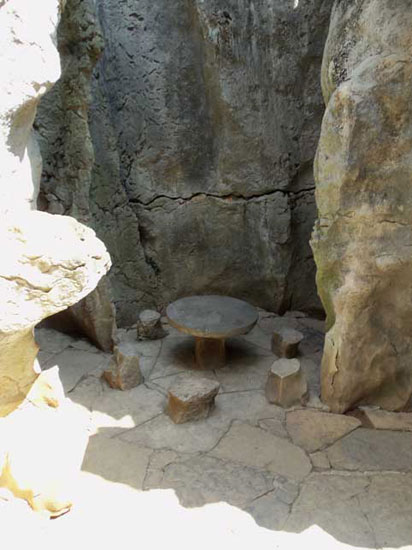 |
| In the middle south of the Forest was "The Pond of Sword Peak". The path scrambled through natural tunnels between lengths of walkway. |
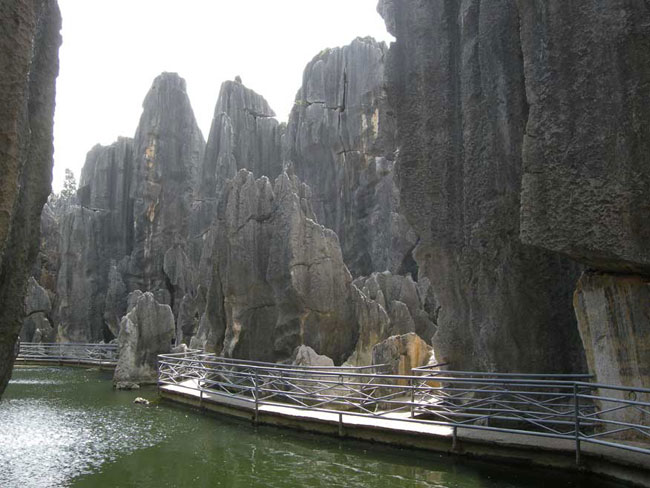 |
| Every 5 minutes the path would scramble over a rise, drop into a gap and bring us to another view. |
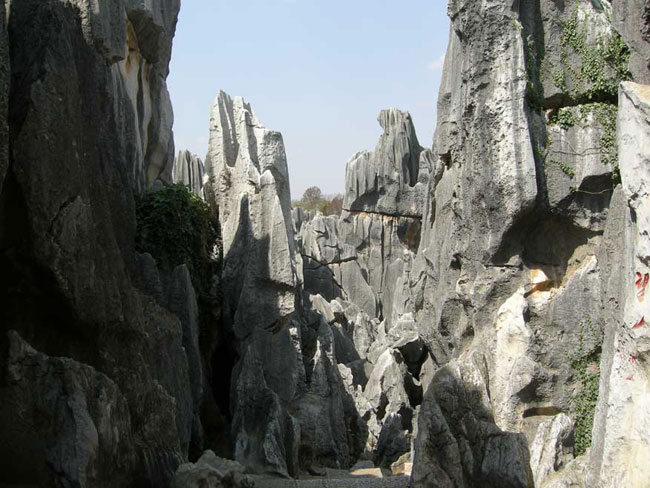 |
| In the center of the Forest was the PeakView Pavilion... |
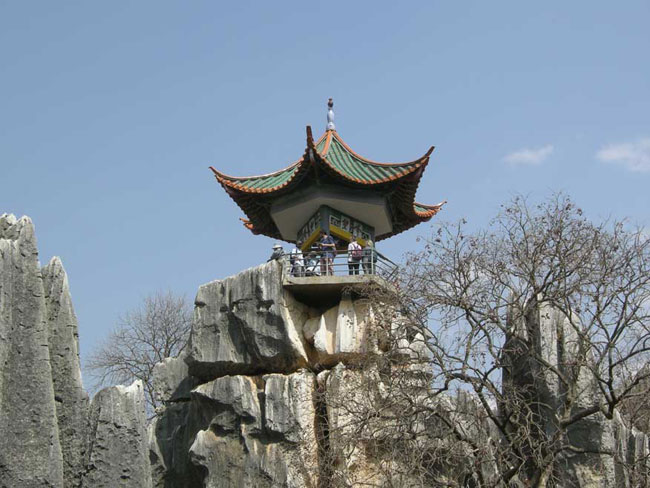 |
| ...from whence one could see across the peaks to the nearby Forest offices to the southwest |
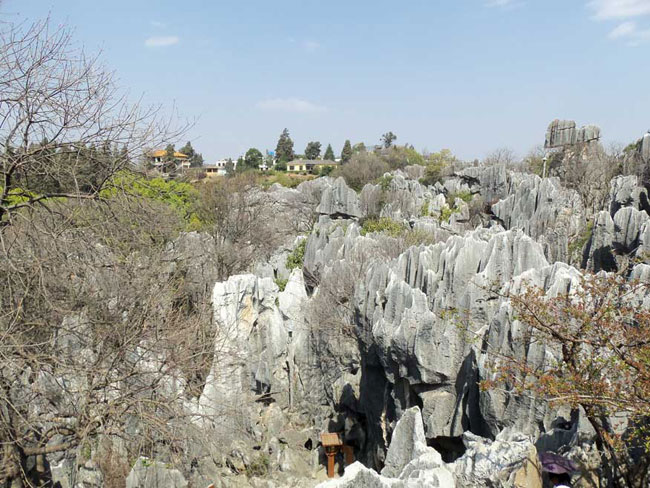 |
| ...or turn southeast |
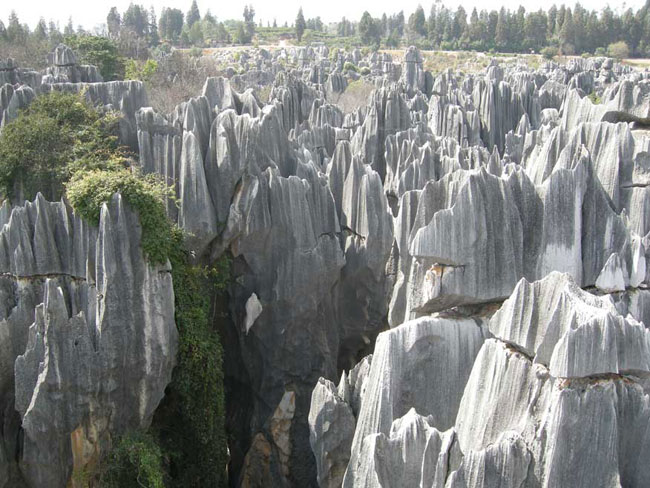 |
| ...or northeast |
 |
| Then we got severely off the "beaten track". We took the electric cart on the periphery road and got off at a sign pointing away from the central formations to "The Eternal Mushrooms". This led out away to a mixed area... tilled fields on the flats between rises covered with "hoodoos" ... pillars where water and weathering had eroded the pillar more than the more resistant cap stones. There were basalt layers in the distance. |
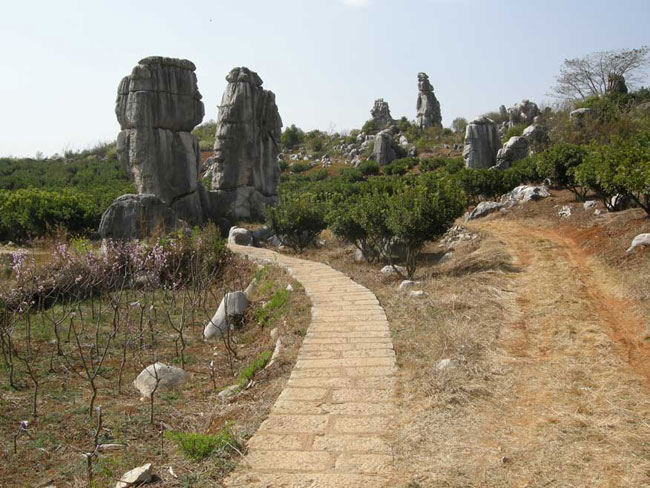 |
| A couple of small lakes skirted the path. After the only mildly-crowded central forest, we were now in an area where we were the only people visible. For the next hour of wandering (sometimes lost among the peaks) we did not encounter anyone else. |
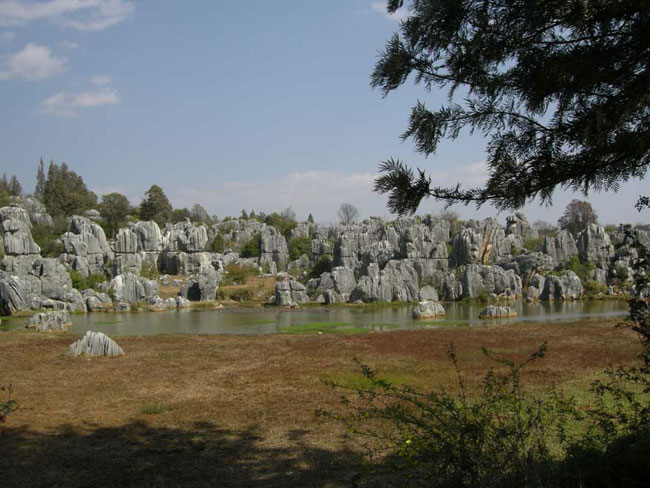 |
| There was a heron fishing (or frogging) in the lake below us. |
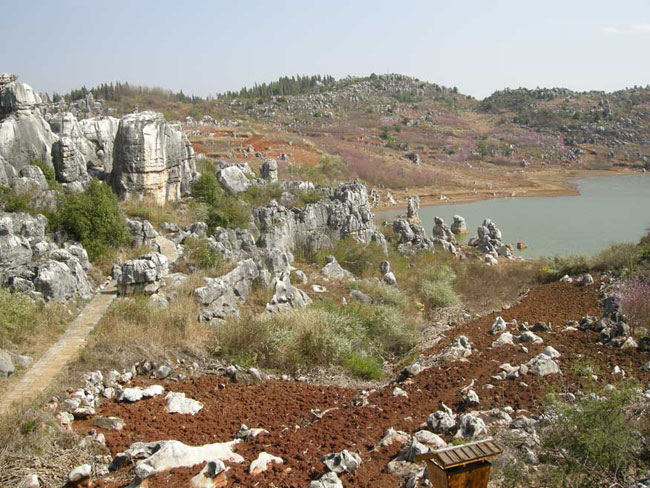 |
| Now back to the developed area, the flow of paths and carts bring you to the Lotus Pond. We were too early in the season for any floral activity |
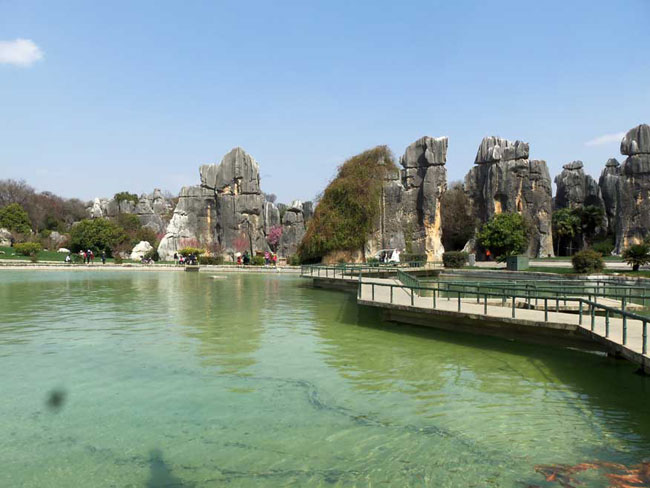 |
| ...but not too early for the enthusiastic school of Koi. |
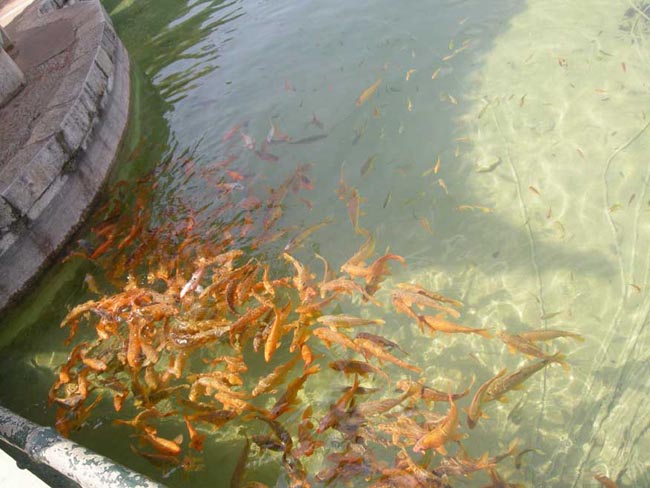 |
| The final grove of towers is another area popular for weddings... broad mowed lawns... |
 |
| ...and scenic ponds with tourists snapping photos of the costumed staff (or their own members in rented on-the-spot regalia) |
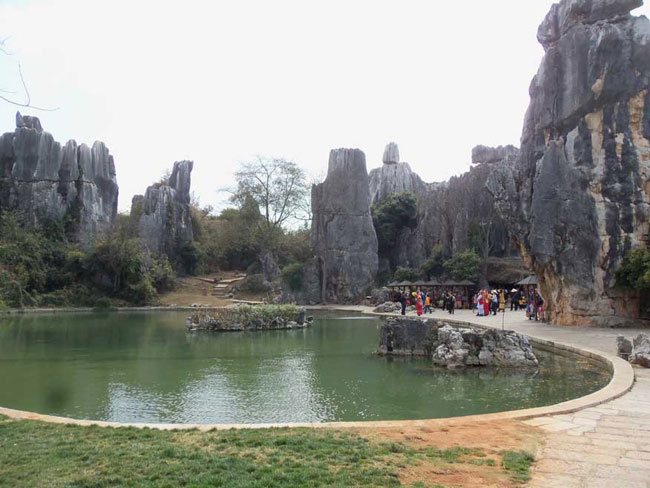 |
| Our final view of the "official" area... mowed lawns amongst weathered limestone. |
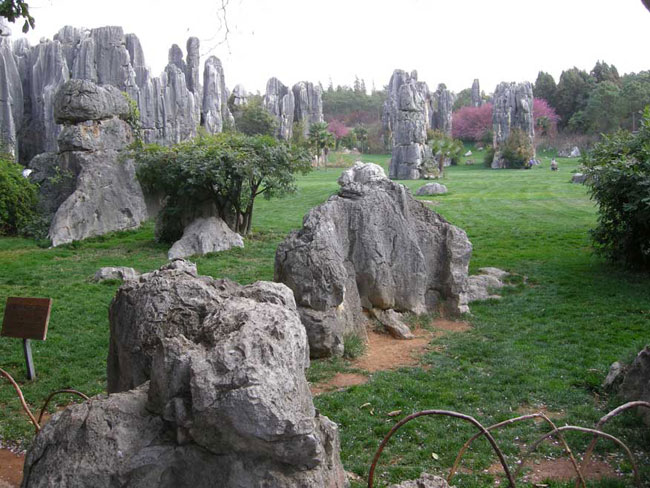 |
| ...and as we left the less-manicured area, the karst sank back beneath the soil, patiently wait for erosion to bring it to light. |
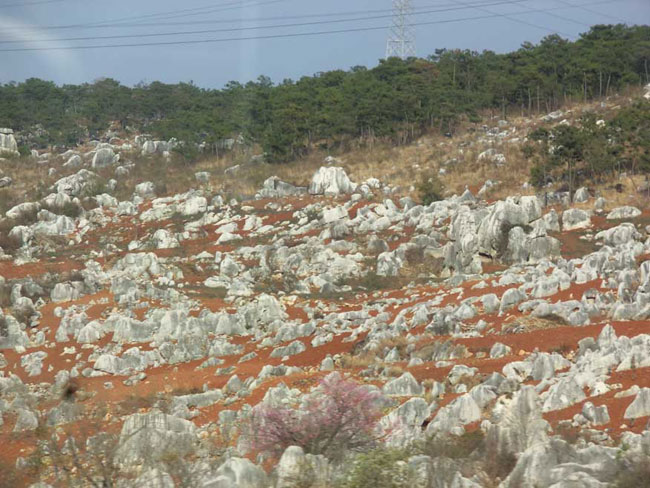 |


































